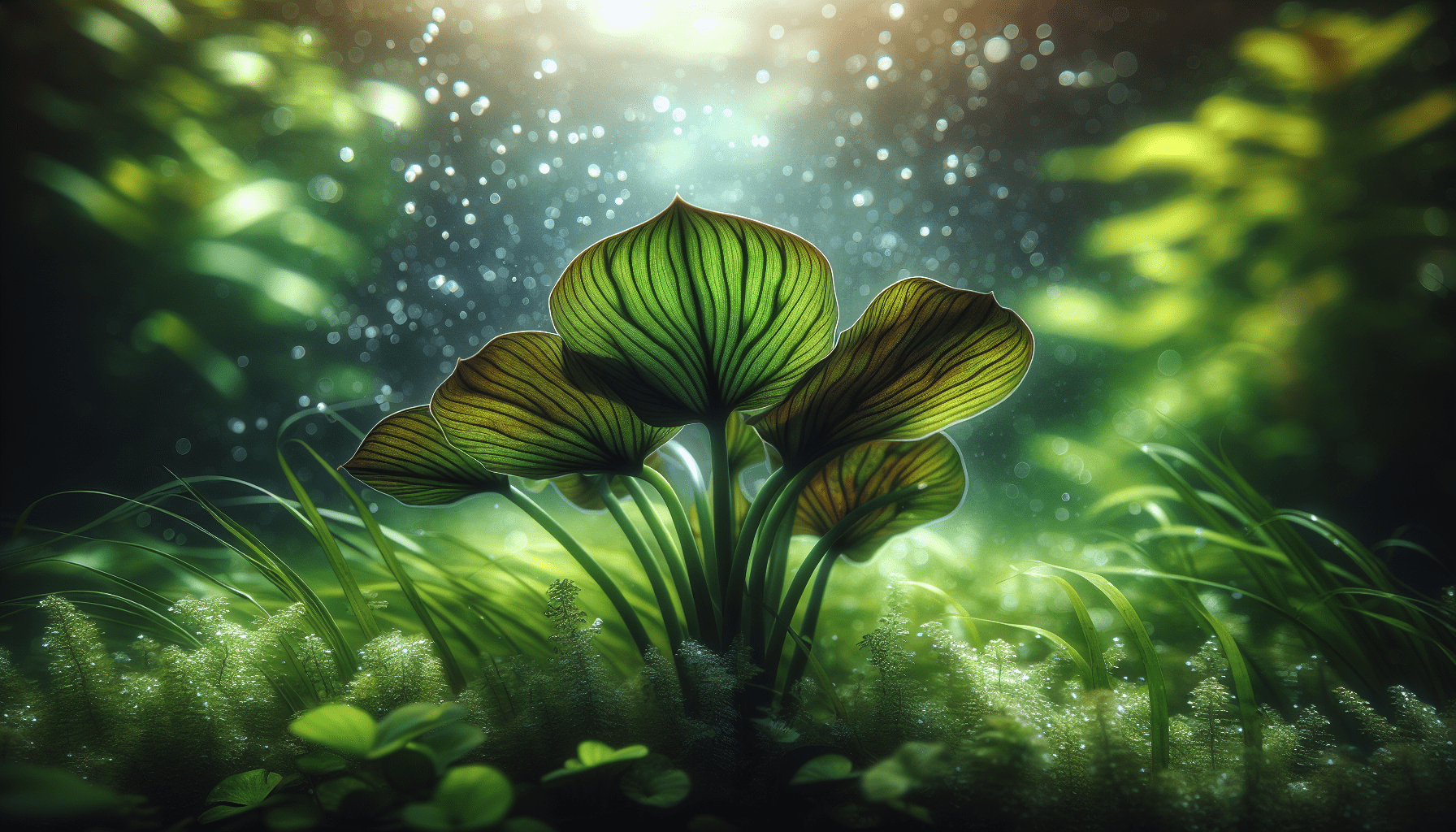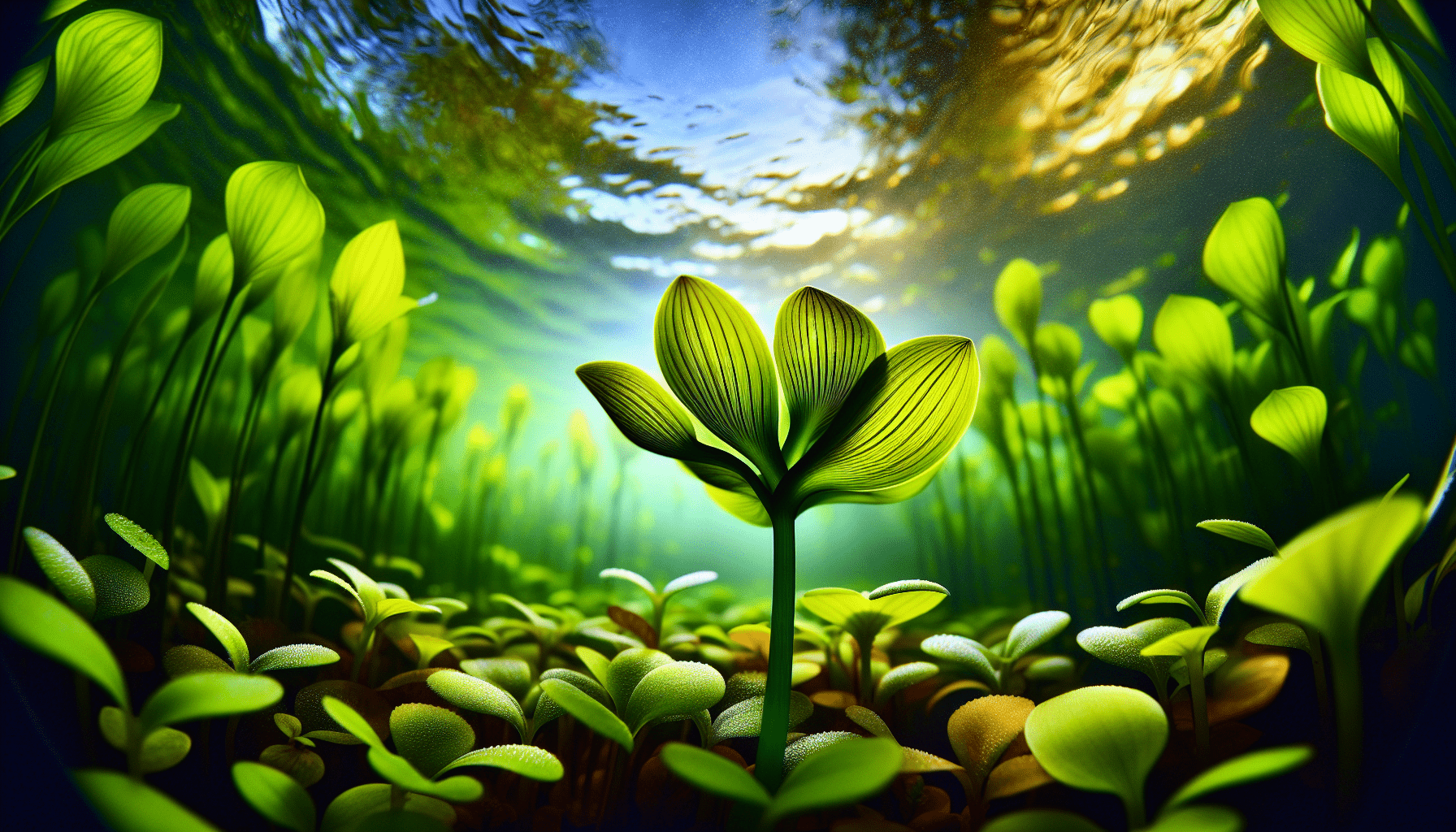This article embarks on an exploration of Sagittaria Macrophylla, a unique aquatic species often classified as a weed. You’ll become familiar with its distinct characteristics, habitat, and role in the ecosystem, thereby gaining a refined perspective on its place within the wide array of water flora. A comprehensive understanding of this particular vegetation can serve as a stepping-stone into the broader sphere of the aquatic plant kingdom, their functionality and significance in sustaining critical biodiversity and fostering environmental balance. An in-depth reading will award you the opportunity to appreciate the notable, yet often overlooked aquatic weed, Sagittaria Macrophylla.

Definition of Sagittaria Macrophylla
Sagittaria Macrophylla, often referred to as a large-leaf arrowhead, is a species native to North America that belongs to the perennial aquatic plant family Alismataceae. It is popularly known for its arrowhead-shaped leaves and spreading capabilities.
Scientific categorization
In the realm of scientific taxonomy, Sagittaria Macrophylla belongs to the Plantae kingdom, under the Tracheophyta phylum. It is classified under the Magnoliopsida class and is part of the Alismatales order. As aforementioned, its family is Alismataceae, its genus is Sagittaria, and its species is S. Macrophylla.
Common names
Besides its scientific name, Sagittaria Macrophylla is also commonly known as the broad-leaf arrowhead or large-leaf arrowhead. Its distinctive leaf shape, reminiscent of an arrowhead, accounts for its common names.
Identifying characteristics
Sagittaria Macrophylla can be primarily identified through its foliage, which distinctly resembles the shape of an arrowhead. Its leaf blades are broad and demonstrate evident parallel venation. The flower is usually white, with three petals, and has a yellow-colored centre. The plant’s primary growth occurs in water bodies surfaced with stagnant or slow-moving water.
Geographical Distribution of Sagittaria Macrophylla
This plant species is commonly found in the northern regions of North America.
Native regions
Historically, Sagittaria Macrophylla is native to North America, particularly in areas from Southeast Manitoba to Northeast Oklahoma, Eastern Louisiana, and Florida.
Invasive areas
Today, the plant’s geographical distribution extends beyond its native regions, becoming invasive in areas where it is introduced.
Preferred environmental conditions
As an aquatic plant, Sagittaria Macrophylla commonly inhabits marshes, swamps, and other shallow water or wetland habitats. It can grow in either drier land or entirely submerged conditions.
Growth Habits of Sagittaria Macrophylla
The growth traits of Sagittaria Macrophylla depend heavily on environmental conditions, highlighting its ecological versatility.
Seasonal patterns
As a perennial plant, it demonstrates new growth in the spring, flourishes in the summer, and dies back during the fall and winter months while its tuberous roots remain alive underwater.
Common growth stages
The growth stages for Sagittaria Macrophylla, like many other perennial plants, involves a vegetative period as well as a period of flowering and seed production.
Impact of different climatic conditions
While the plant can tolerate a variety of climatic conditions, its optimal growth is observed in warm, humid climates.

Anatomy of Sagittaria Macrophylla
The structure of Sagittaria Macrophylla demonstrates unique characteristics that are adapted for survival in aquatic and wetland habitats.
Root system structure
The root system of the Sagittaria Macrophylla is tuberous, allowing it to store nutrients and water, ensuring the plant’s survival through adverse conditions.
Distinctive leaf features
Its distinctive arrowhead-shaped leaves are an identifying characteristic of this species. While the leaves can be submerged, they more frquently float on the water surface or emerge out of it.
Flower and seed characteristics
The flowers of the Sagittaria Macrophylla are notable for their three white petals and a yellow center. Each flower can subsequently develop into a fruit ─ a conical, beaked aggregate of achenes.
Ecological Impact of Sagittaria Macrophylla
This species plays a significant role in the ecosystems it inhabits.
Role in the ecosystem
Sagittaria Macrophylla serves as a food source for various animal species and provides breeding and nesting sites for waterfowls. It also plays a role in purifying and oxygenating water bodies.
Impact on biodiversity
In its native regions, the plant contributes positively to biodiversity by encouraging other species’ growth. However, in invasive areas, it can outcompete native flora, leading to a decrease in diversity.
Habitat preferences
As mentioned before, this plant thrives in marshy, swampy areas with stagnant or slow-moving water bodies ─ its roots buried in the soft muddy bottom of the water.
Human Interaction with Sagittaria Macrophylla
The interactions between humans and Sagittaria Macrophylla extend to fields such as traditional medicine, fisheries, and commercial uses.
Use in traditional medicine
Traditionally, some cultures have used Sagittaria Macrophylla as a medicinal plant, employing its leaves and roots for treatment of various ailments.
Impact on fisheries and aquaculture
The plant plays a role in aquaculture as well, serving as a habitat and food source for various aquatic species. However, if overly abundant, it can cause challenges by impeding water flow or entangling fishing gear.
Commercial uses
Commercially, it has been used in the aquarium trade for aesthetic purposes owing to its attractive foliage.
Status as a Weed
Sagittaria Macrophylla’s ability to multiply rapidly and dominate its surrounding environment makes it potentially problematic in certain contexts.
Criteria for classification as a weed
The plant fulfils several criteria to be classified as a weed, including its fast growth rate, ability to propagate through both sexual and asexual means, and capacity to outcompete other plant species.
Effects on human activities
Its growth can impede human activities such as boating, swimming, and fishing by forming dense mats on the water surface.
Management strategies
Therefore, a combination of physical, chemical, and biological control methods is needed to manage its growth effectively.
Sagittaria Macrophylla Management and Control
Given its potential as a weed, various management and control strategies need to be employed to curtail its spreading and overgrowth.
Physical removal methods
The physical removal of Sagittaria Macrophylla is an option, often involving pulling or cutting the plant, followed by the extraction of the plant matter from the water body to prevent re-growth.
Chemical control options
Chemicals such as herbicides can also be used to control the growth of the plant. However, their use should be monitored to avoid harming non-target species and affecting water quality.
Biological control strategies
Biological control strategies, such as the use of specific herbivorous organisms that feed on Sagittaria Macrophylla, are another potential management strategy. Monitoring these organisms’ population is necessary to ensure they do not become troublesome themselves.
Scientific Research on Sagittaria Macrophylla
There has been considerable scientific research directed towards understanding the biology and ecology of Sagittaria Macrophylla.
Historical studies
Historically, research on this species has focused on describing its morphology, reproductive biology, and its role within ecosystems.
Recent research findings
More recent research has investigated the plant’s potential as a bioindicator of specific environmental conditions or its use as a phytoremediation plant to mitigate water pollution.
Potential areas for future research
Future research could explore its genetic diversity or its utility in ecological restoration projects, especially in areas where wetlands have been degraded.
Conservation Status of Sagittaria Macrophylla
The conservation status of Sagittaria Macrophylla has yet to be officially assessed by international conservation bodies.
International status
Currently, there is not enough information to determine Sagittaria Macrophylla’s exact conservation status at an international level.
Protection efforts in native regions
However, in its native regions, certain protection efforts prioritize the maintenance of wetland habitats which indirectly assist in the conservation of this species.
Major threats to conservation
Threats to the plant’s conservation include habitat loss and degradation due to human activities such as agriculture, urban development, and water pollution.
In conclusion, Sagittaria Macrophylla, despite its status as a weed in some areas, plays a crucial ecological role and warrants attention both from a management and a conservation perspective.